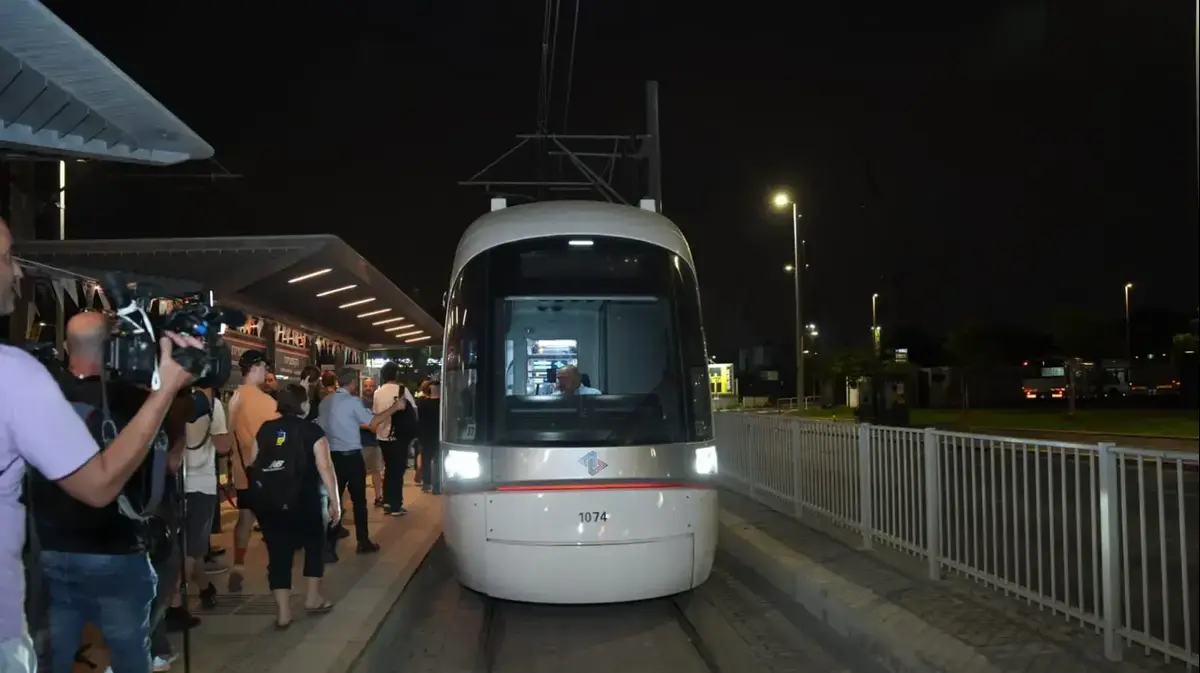Improvements on the red line of the light rail in Tel Aviv from next Thursday: the Tevel company, the operator of the project, will begin to fully operate a third line, R2, from Kiryat Aryeh station to Kommiom station in Bat Yam.
It will join the two existing lines, R1 from Petah Tikva central station to the communes and R3 from Kiryat Aryeh to Elifelt station.
R2 which is currently running a limited service during limited hours will run 3 times an hour, and the number of trains on the three lines in each direction will increase to 15 every hour.
In the ground section, the train frequency will increase every four minutes.
At the same time, a further shortening of the total travel time along the line is expected, through increasing the travel speed in the overhead section and improved adaptation to the traffic lights, so that the train will receive priority.
Today, a trip from a central station in Petah Tikva to the last station in Bat Yam takes 1 hour and 13 minutes, and the update will bring the travel time closer to 1 hour and 6 minutes, the target set for the line.
It is possible that the move will be postponed for a week, and will only be carried out on Thursday in two weeks.
Yesterday NTA published the operating data of the Red Line in its first six months, confirming the disclosure by Walla Car, that the number of passengers on the line is a third of what was planned. Currently, 75 thousand people travel on the line per day, compared to the 234 thousand that were planned. What's more: this is a significant decrease from their number before the outbreak of the war, which was 100-110 thousand people per day. The number dropped sharply after October 7, and has been slowly increasing since then. However, buses and Israel Railways, which also recorded a large decrease in usage since the outbreak of the war, saw a larger increase.
In the six months 9 million passengers traveled on the first line, with almost half of them boarding at Tel Aviv stations, in the ground section where 60% of passenger traffic is concentrated. Allenby was the busiest station, with 795.5 thousand passengers, but in second place is Ben Gurion station in Bnei Brak with 756.7 thousand passengers. Ahranovich station in the city is also one of the most popular, with almost half a million passengers.
Most trips are made between 6:30 and 9:00 a.m. and between 2:00 p.m. and 7:00 p.m. Half of the passengers pay with apps, compared to 20% of all public transportation.
Allenby Station.
The busiest on the red line/courtesy of NTA
Despite this, NTA is actually satisfied with the data, even though this morning there was a malfunction again in the operation of the line, which was silent for half an hour before 7 in the morning due to a malfunction. Udi Kaplansky, NTA's Chief Operating Officer, told Walla Car that "there are very few lines in the world A light rail that combines an underground and a surface section, with an advanced and complex signaling system.
There are children's departments, but we are improving.
A signal fault that initially took us 6.5 hours to solve, we are already solving in two hours."
Regarding the failure to meet the passenger transport goals, Kaplansky says that "passenger forecasts are not always accurate, even in the world, and it takes projects like this between 3 and 5 years to reach their potential.
We are working with the Ministry of Transportation to add feeder lines to the red line.
We postponed a marketing plan because of the war, which was intended to show even those who do not live near the line that it is relevant to them, and combined with a bus or bicycle, it can reach its destination faster than other transportation options."
Were there any passenger behaviors that surprised you?
"We see peak times in use in the afternoons And turn in the evening, when on the one hand people use the light rail to return from their workplaces and on the other hand people use it to go out for fun and shopping.
This shows that it is starting to take its place as a significant means of transportation."
More on the same topic:
The light rail in Gush Dan
NTA

